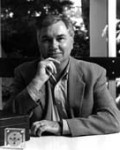
Daniel Palanker
Associate Professor (Research) of OphthalmologyResearch areas:
Biophysics, Electrical Engineering, Laser Physics, Photonics, Ultrafast Science
Description
Lasers and Accelerators
Our research is focused on interactions of pulsed electric field and light with biological cells and tissues. In optical domain we study laser-tissue interactions and develop their biomedical (primarily ophthalmic) applications. The research themes include: cellular response to transient hyperthermia; explosive vaporization and dynamics of cavitation; multiphoton ionization and molecular dissociation. Photothermal interactions are applied to minimally-traumatic ocular therapy, with research including mechanisms of retinal laser therapy, selective targeting of the tissue layers, retinal plasticity in response to hyperthermia. Multiphoton ionization of transparent tissues by ultrafast lasers is applied to cataract and refractive surgery.
Biophysics
Our research is focused on interactions of pulsed electric field and light with biological cells and tissues. We study laser-tissue interactions and develop their biomedical (primarily ophthalmic) applications. The research themes include: cellular response to transient hyperthermia; explosive vaporization and dynamics of cavitation; multiphoton ionization and molecular dissociation. Photothermal interactions are applied to minimally-traumatic ocular therapy, with research including mechanisms of retinal laser therapy, selective targeting of the tissue layers, retinal plasticity in response to hyperthermia, migration of photoreceptors and their rewiring. Multiphoton ionization of transparent tissues is applied to cataract and refractive surgery. In addition, we study the mechanisms of electrical neural stimulation and develop optoelectronic retinal prosthesis for restoration of sight to patients blinded by retinal degeneration. This project involves development of photosensitive subretinal implants and the near-IR image projection system, studies of retinal response to patterned electrical stimulation, cellular migration and retinal rewiring following subretinal implantation of 3-dimensional electrode arrays. We also study the mechanisms of migration of photoreceptors after retinal injury, and associated changes in the retinal neural network.
Selected Publications
- Optoelectronic retinal prosthesis: system design and performance
- Dynamics of Retinal Photocoagulation and Rupture
- Electrosurgery with Cellular Precision
- Strength-duration relationship for extracellular neural stimulation: numerical and analytical models
- Selective Retinal Therapy with Microsecond Exposures Using a Continuous Line Scanning Laser
- Improving the Therapeutic Window of Retinal Photocoagulation by Spatial and Temporal Modulation of the Laser Beam
- Photodiode Circuits for Retinal Prostheses
- Multi-Focal Laser Surgery: Cutting Enhancement by Hydrodynamic Interactions Between Cavitation Bubbles
- Optical breakdown in transparent media with adjustable axial length and location
- Femtosecond Laser–Assisted Cataract Surgery with Integrated Optical Coherence Tomography
 David A. Reis
David A. Reis
 John D. Fox
John D. Fox
 Philip H. Bucksbaum
Philip H. Bucksbaum
 Robert L. Byer
Robert L. Byer
 Tor O. Raubenheimer
Tor O. Raubenheimer
 Ronald D. Ruth
Ronald D. Ruth